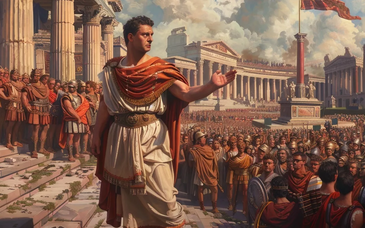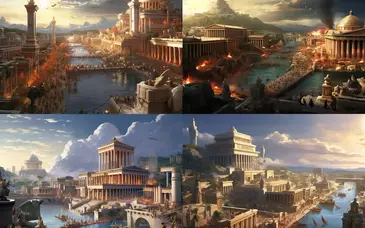Five years after the conclusion of the treaty with Carthage, Rome was at war with the Samnites. For centuries the Sabellian highlanders of the Apennines had struggled to force their way into the plains between the hills and the Mediterranean. But Tuscans and Latins had held them in check, and for the past hundred years the direction of their expansion had been not on Latium but east and south-east. They had begun to stream into Campania where they had become accustomed to a more civilized life, and in turn had become less warlike and ill fitted to cope with their kinsmen of the hills. The most powerful group of the highlanders, the confederated Samnites, were now, in the middle of the fourth century, swarming down upon their civilized precursors in Campania, as, farther east and south, Lucanians and Bruttians were pressing upon the Greek colonies. In effect the semi-civilized were hammering the over-civilized.
The Greeks were appealing for help to Epirus, the Campanians appealed to Rome and Rome went to their rescue.
The First Samnite War (343-341 BC) was brief. It was marked by Roman victories in the field and by a mutiny on the part of the soldiery, which was suppressed by the sympathetic common sense of the distinguished dictator Marcus Valerius Corvus, who was said to have vanquished a Gallic Goliath in single combat in his youth.
The war was ended by a hasty peace, owing to the revolt of Rome's Latin allies who resented their dependence on the dominant city. In effect the Romans deserted the Campanians, in face of an immediate menace to their own position. They had forced the members of the Latin League into the Samnite War without consulting them. The Latins demanded only that they as a group should stand on an equality with Rome. Rome however rejected the proposal and in two years campaigning asserted her supremacy (340-338 BC) in the Latin War.
The effect of the Latin War was to tighten Rome's grip upon Latium and to provide her with more lands upon which to settle her ever-increasing agricultural population. The Latin League was finally dissolved (338 BC). Some of the cities were incorporated with Rome, others were admitted to civil but not to political rights of Roman citizenship. All were debarred from forming separate alliances with each other or any external power.



